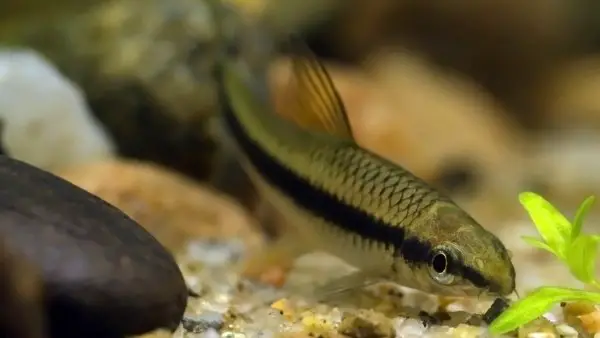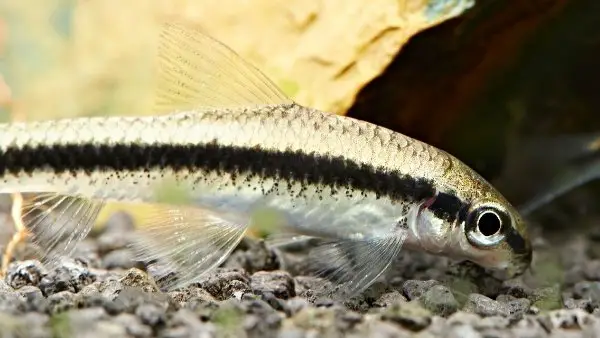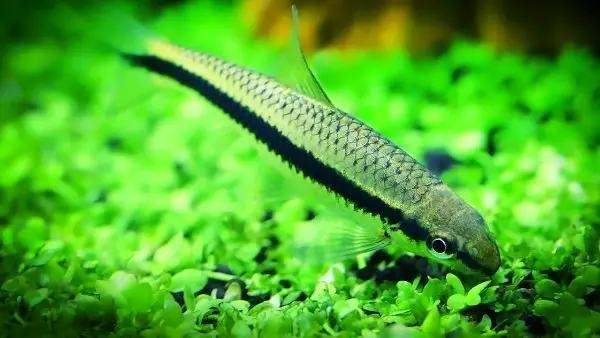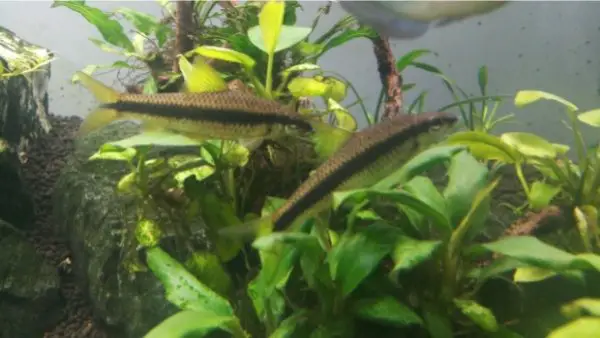If you own a freshwater fish tank and are noticing algae outbreaks, it may be a good idea to turn your attention to the Siamese Algae Eater. These awesome fish are a great addition to aquariums for multiple reasons, with none better than their cleaning tendencies.
They are fun and social fish, making any aquarium community more alive and exciting, and they will get along with almost any species you already have in your tank. In addition to this, they are incredibly low maintenance and will not need a huge amount of care to live and thrive in your aquarium.

Furthermore, Siamese Algae Eaters are beautiful little fish. Yes, their coloration is not as eye-catching as the Golden Algae Eater, or other similar fish, but they are certainly nice to look at. Perhaps the most attractive aspect from a hobbyist's perspective is that they are fantastic freshwater algae eaters, and will do a fantastic job of cleaning up the green in your tank!
General Information
In our guide, we will be discussing the various benefits of having one of these in your tank, as well as the species in general, origin, behavior, requirements, and more.
Origins
Siamese Algae eaters' scientific name is Crossocheilus Siamensis or Crossocheilus oblongus. They are freshwater dwellers that are a member of the carp family. Their natural habitat is the mainland of Southeast Asia, and more specifically, Thailand.
They can be commonly found in rivers and streams, in addition to this they can be found residing in flooded forest regions during the Southeast Asian "rainy season".
Benefits of Having Them In Your Tank
When it comes to the benefits and usefulness algae eating fish bring to aquariums, the name sort of gives it away! Siamese Algae Eaters will feed on naturally grown algae found in their natural habitat, meaning they will do the same in your tank, keeping it nice and clean and saving extra work for you as the tank owner.
Many hobbyists say that a little algae growth is good for the ecosystem of an established tank, and whilst this is true to an extent, it is highly recommended that you do not have lots of algae residing in your tank as it can cause many disease-related problems for your fish.
Of course there are other ways of controlling an algae bloom in your tank, but buying a Siamese Algae Eater and putting it to work is the most humane and effortless way of ridding algae from your tank.

Maintaining healthy water and an overall healthy aquarium should be your number one priority as a fish owner as it will correlate to healthy and happy fish and other tank inhabitants. Too much harmful algae will not only cause you to work twice as hard manually removing it but it will also be detrimental to the health of your fish and other animals residing in your tank.
Appearance
The Siamese algae eater sports a rather slender, long body, and is brown in color. They are easily identified by a jet black stripe that runs across the entire length of their body, from nose to tail. Despite being rather obvious in their appearance, the black stripe will typically fade against the background features in your tank, which makes them camouflaged and more hidden.
When you try and identify female Siamese algae eaters look at the middle section of their body, it should be broader and somewhat thicker than the skinnier males. Unlike many other fish, these algae eaters do not have a "swim bladder", meaning that if they do not constantly move around, they will sink to the bottom of your tank.
Size
How big do Siamese Algae Eaters get? In terms of Siamese algae eater size, these fish will typically grow to around 6 inches (16 cm) in length, making them one of the largest freshwater tropical fish out there. If you are planning on adding one of these awesome fish to your community, make sure you have a tank of 30 Gallons (136 liters) or more as this will allow them to have the room to freely swim around comfortably, find new hiding spots, and feast on algae breakouts.

Behavior And Temperament
These fish are well-known for their peaceful nature and tranquil behavior, making them a brilliant and compatible choice for your community. They are constantly on the move and very social fish, getting along with most other fish and critters that are in your freshwater tank.
Despite being sociable, they do need time to themselves and certainly time to rest. However, this is a little tricky considering they have to be on the move at all times due to not having a "Swimmer Bladder". So, you should add plenty of decor and places for them to hide at the bottom of your tank so they can relax and have some alone time.
Due to this constant movement, they can be a little bit stressful for other tank members, and we all know that stress is never good for a fish! Stress can cause many complications to a fish's health and wellbeing, which is why adding hiding spaces in your aquarium before introducing these algae eaters is the best thing to do.
On occasion, the Siamese algae eater can become aggressive and territorial towards their own. This is why it is recommended to keep 5 or more in a group, replicating their normal situation in the wild and it doesn't allow a single algae eater to claim a specific area of the tank as their own.
Diet and Tank Setup
Feeding your fish the correct food in order to maintain health and happiness is certainly the hobbyist's responsibility. Siamese algae eaters are usually much less picky about their food than most, and they are also omnivores.
Feeding and Diet
Siamese algae eaters will thrive within an environment that closely resembles that of their natural habitat. They love all types of tropical algae, which is great as they will more than likely grow inside your freshwater aquarium at one point or another.
Other than Algae, it is recommended that these fish are fed a balanced diet consisting of fish food containing protein and also natural plant-based foods. Commercial and live foods are always accepted, and it is important not to overfeed or underfeed your algae eaters.
Overfeeding your fish tank will only lead to problems in water quality, which in return creates a breeding ground for many fish diseases, and underfeeding your fish will lead to a malnourished and unhealthy fish tank.
Tank Size And Water Conditions
With these freshwater algae eaters, you will need a tank that is 30 Gallons (136 liters) or more. This allows them to be active and explore, whilst being provided with a plethora of brilliant hiding spots.

The water pH level needs to be anywhere between 6.5 to 7.0, replicating their natural water conditions in the wild. Their natural habitat is freshwater streams, rivers, and water-build-ups with a low current. You will need to keep the water temperature between 75 - 79°F (23 - 26°C) for the best results.
Tank Mates
Siamese algae eaters play very nicely with other species. They are bottom-dwellers though, meaning that they can sometimes become a little territorial of their algae-ridden areas. However, even living with other bottom-dwellers is usually OK and they will keep themselves to themselves.
You should certainly avoid territorial fish such as cichlids and red-tailed sharks to be Siamese algae eater tank mates, perhaps the only exception to the rule is Angelfish. Here are some recommendations:
- Guppies
- Tetras
- Danios
- Barbs
Conclusion
Siamese algae eaters are truly unique and make for an excellent new addition to almost any freshwater aquarium fish tank. You also don't need to spend every day looking after them, they are fairly hardy and do not require much extra attention. If you provide them with a suitable home in a friendly community, they will become valuable tank cleaners.
Alternatively, if you do have an algae issue in your tank but you own a saltwater tank, there are many different saltwater algae eaters that you can buy that will also do a fantastic job.

